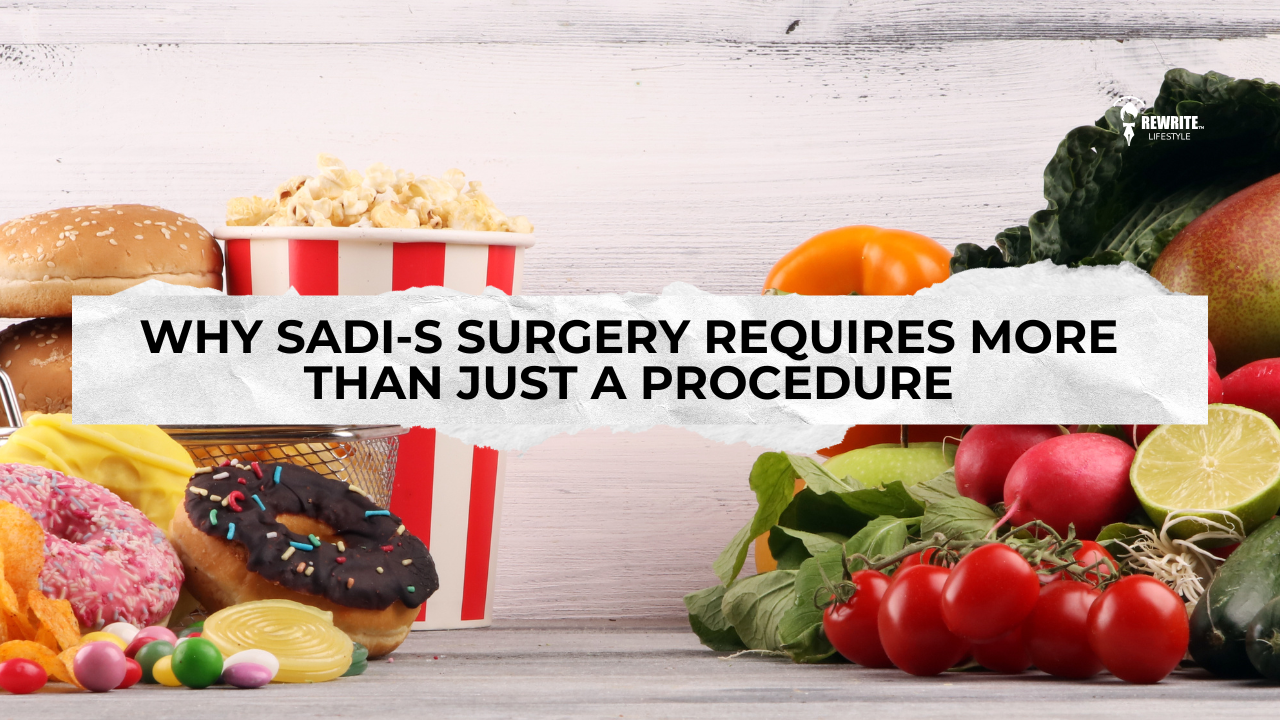The Most Extreme Bariatric Surgery Explained
Apr 15, 2025

What Is the SADI-S Surgery and Why Is It Making Headlines?
Recently, influencer Remi Bader stirred up conversation in the bariatric and body positivity communities after revealing she underwent the SADI-S (Single Anastomosis Duodeno-Ileal bypass with Sleeve gastrectomy) procedure—a lesser-known but highly aggressive form of bariatric surgery. While she didn’t share much detail initially, her social media posts showing fast food like Popeyes and Dunkin’ Donuts sparked controversy—and for good reason.
At The Rewrite Lifestyle Center, we believe education and transparency are crucial, especially when dealing with life-altering surgeries like the SADI-S. This blog dives into why this procedure is considered the last resort in the weight loss surgery toolkit, and what it truly demands from those who choose it.
What Is the SADI-S?
SADI-S is a hybrid procedure that combines elements of the gastric sleeve and gastric bypass. Unlike other forms of bariatric surgery, it significantly alters your digestive anatomy by:
-
Reducing stomach size (like the sleeve),
-
Bypassing a portion of the intestines (like the bypass), and
-
Limiting fat absorption more drastically than either.
It’s often recommended for individuals with severe obesity-related health issues who require rapid and significant weight loss. But this isn't a magic fix—it’s a surgical intervention that demands major lifestyle changes to avoid serious complications.
Why Diet Still Matters After SADI-S
Having SADI-S doesn’t mean you can go back to poor eating habits and expect long-term success. In fact, what you eat matters more than ever. Clients at The Rewrite Lifestyle Center who’ve undergone this surgery are typically prescribed:
-
100–120 grams of protein per day,
-
Specific bariatric vitamin supplements,
-
A low-fat, nutrient-dense diet.
Even then, common post-op challenges include chronic diarrhea, B12 deficiencies, fatigue, hair loss, and fat-soluble vitamin issues. Only 20–30% of fat is absorbed after surgery, making it critical to eat intentionally to avoid malnutrition.
Surgery Is Not the End—It’s the Beginning
The truth is, no matter what kind of bariatric surgery you undergo, including SADI-S, long-term success depends on your ability to rewrite your habits. Eating Dunkin’ Donuts or fried chicken regularly post-op may lead to weight regain and the return of pre-existing health issues.
At The Rewrite Lifestyle Center, we help clients make those permanent shifts with guidance in:
-
Bariatric nutrition,
-
Emotional eating support,
-
Personalized meal planning.
Why Remi Bader’s Story Is a Wake-Up Call
The concern surrounding Remi’s case isn’t about judgment—it’s about education. SADI-S is the final, most extreme option available in bariatric surgery. When someone influential showcases poor post-op habits without context, it sends the wrong message.
For those navigating life after bariatric surgery, especially procedures like the SADI-S, it’s essential to have the right education, support, and community.
-
Learn more from the American Society for Metabolic and Bariatric Surgery
-
A deep dive into how SADI-S differs from gastric bypass
-
Tips on post-bariatric surgery nutrition
Are You Struggling with Food Addiction? Take the First Step Today!
If cravings, binge eating, or emotional eating are holding you back, you’re not alone. Food addiction can impact long-term weight loss, especially after bariatric surgery (gastric sleeve, bypass surgery).
At The Rewrite Lifestyle Center, we help you break free from stress eating and build a sustainable, healthy relationship with food.
✅ Discover if you're facing food addiction and get expert guidance on bariatric nutrition, meal plans, and support from Shenelle Coplien and the Bariatric Rewrite team. Your journey to lasting weight loss starts here!
👉 Take the Food Addiction Quiz Now!
Join our bariatric support community for expert tips on the bariatric diet, post-bariatric surgery care, healthy eating, and bariatric recipes to fuel your transformation.



